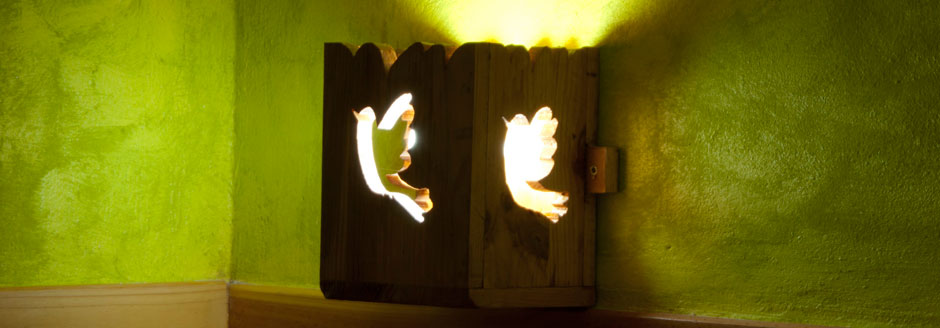
- Fuives (the appreciated Catalan donkey) (Olvan) - Tel. 646 492 310 - www.fuives.com
It is the world's centre of the Catalan donkey. Since 43 years ago, Fuives struggles to preserve the native breed of the Catalan donkey. It is the biggest reserve of Catalan donkeys in the world and it is located in Berguedà. The zoological centre is considered a Scenic Area and Natural Reserve, set in a traditional country house built before the tenth century.
- Artigas Gardens (La Pobla de Lillet) - Tel. 93 823 61 48 - Click for more information
The Artigas Gardens, designed by Antoni Gaudí, are in the municipal district of La Pobla de Lillet. We can get there by car, but also using the Upper Llobregat Tourist Railway. The last option is the best one if we are travelling with children. The route passes through unspoilt and thick forests, with tropical plants and underground water springs.
- Mining Museum of Cercs - Tel. 93 824 81 87 - www.mmcercs.cat
The Mining Museum of Cercs, located in the mining colony of Sant Corneli, is considered an interpretation centre devoted to the coal mining industry of Berguedà. The colony, 960m above sea level, was founded at the end of the nineteenth century in order to house the people who worked in the coal mines, using the industrial colony model, which was deeply-rooted in Catalonia. Nowadays, it is one of the best preserved mining centres in Catalonia and Spain.
- Cement Factory Museum (Castellar de n’Hug) - Tel. 93 825 70 37 - www.museuciment.cat
At the end of the nineteenth century, the count Eusebi Güell, architect Antoni Gaudí's sponsor, entrusted the construction of the first Portland cement factory in Catalonia. It was built in the area of Clot del Moro, in the municipality of Castellar de n'Hug, in order to take advantage of the amounts of limestone. The history of the Asland cement factory in Clot del Moro has experienced great years and declining and silent periods. The factory was closed down thirty years ago, after almost 75 years producing Portland cement. However, due to its architectural interest, the magic its shapes transmit to the tourists who use the nearby road, and its membership of the Catalonia's Science and Technology Museum, a large number of visitors have enjoyed this fantastic industrial monument, unfortunately silent up to now.
- Oil Mine of Riutort (Guardiola) - Tel. 608 222 525 - www.minadepetroli.com
The visit allows to get into the mine and its underground passages. Even today, after almost a hundred years of inactivity, visitors can see some parts where oil drips.
- Medieval and Cathars Centre (Bagà) - Tel. 93 824 48 61 - www.camidelsbonshomes.com
Following the steps of bons homes (good men) or cathars: this is the invitation of the Medieval and Cathars Centre in Bagà. The centre, located in the ancient palace of the Pinós family, proposes a historical route through the lives of some of the people who were members of this religious order between the tenth and the fourteenth century, who took refuge in Berguedà. You will also discover one of the most famous legends of the region, the rescue of a hundred damsels.
- Hall of Paintings of the Pinós Palace (Bagà) - Tel. 93 824 48 62 - Click for more information
Do you know how people lived in a modern palace? Do you want to discover the rooms of the rich families who controlled the Catalan domains? Then, do not miss the visit to the main floor of the Pinós and Còdol Palace, located in Bagà. There are 5 rooms fully decorated with wall paintings from the seventeenth, eighteenth and nineteenth centuries. They will introduce you to a well-off modern house and you will be able to find out its most private and secret aspects. You can do a 25-minute guided tour every Saturday, Sunday and holiday at 10:30 a.m.
- Green Railway (Cercs) - Tel. 93 824 81 87 - www.carriletverdbergueda.com
The Green Railway (or Carrilet Verd, in Catalan) offers a comfortable and entertaining journey, with a capacity of 56 people. It consists of a four-wheel drive John Deere tractor, which weighs 8 tonnes and has a pneumatic suspension in order to guarantee the comfort when driving over unpaved paths. The carriages have got padded seats, PA system, heating, adjustable windows, litter bins, bell and interior lightning.
- Fumanya Dinosaurs, Paleontological Site (Fígols) - Tel. 938 226 005 - www.dinosauresfumanya.com
In the municipality of Fígols, you can find the opencast coal mines of Fumanya. They are located in a place of evident geological and paleontological interest. The mining activity of the area uncovered a wall with an impressive set of dinosaurs' footprints from 65 million years ago. Further excavation works revealed other elements of high scientific interest too, like dinosaurs' eggs. Nowadays, an interpretation centre is planned to be created in order to explain the site and to place the visitor at the time when dinosaurs lived in the area.
- Textile Factory Museum (Colònia Vidal) - Tel. 93 829 04 58 - www.museucoloniavidal.org
If you visit the Colònia Vidal colony in Puig-reig, you will be able to see how people worked and lived in an industrial colony at the turn of the century. From the factory, you can see the lock and the canal that altered the course of the Llobregat River. You can also find the turbine and the steam engine. In the loom room, the most important machines used to process cotton are shown: the spinning frames and the club looms. In the working colony, you can visit a flat, the school, the library, the cinema, the church, the fish shop, the showers and the washing place.
For more information, visit the website www.elbergueda.cat where you can find touristic information of the region.
 Català
Català Castellano
Castellano English
English